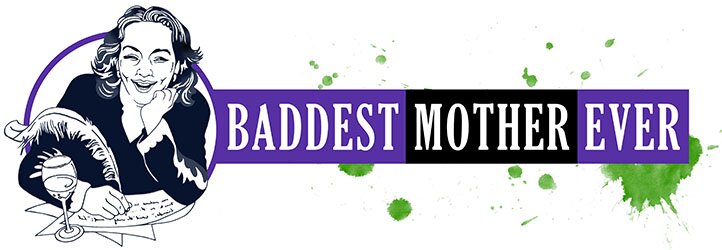Some days, you end up rolling around on the floor in a black muslin bag at the Museum of Modern Art; some days you don’t. TODAY was my day to writhe around on the floor for the edification and entertainment of a crowd of spectators. It’s all Yoko Ono’s fault (she’s used to the scapegoating so we’re cool).
The day started out so normally. A bagel in the hotel lobby, some visiting with other bloggers, a little bit of squealing and much glee. Normal. Then a short walk to the museum where I promptly headed for the Jacob Lawrence “One Way Ticket” exhibit featuring his 60 panel series on the Great Migration of Southern Blacks northwards in the first half of the 20th century.
But I got lost. I went allaway up to the sixth floor instead of stopping on the third and I wandered straight into Yoko Ono’s exhibit “One Woman Show.” I was about to turn around and ask a volunteer for directions because when you’ve seen one apple rotting atop a plexiglass column, you’ve seen them all. (I kid, I kid…kind of) I’ve had positive encounters withe several Ono pieces over the years, but I wasn’t much in the mood for her today.
 Then I turned a corner into a little room labelled “Bag Piece.” Two walls were lined with small photographs taken of Ono’s performance of the Bag Piece at an art festival four years before I was born. In the corner of the gallery, a large black fabric sculpture moved smoothly like some kind of alien creature. I assumed it was an armature covered in fabric and preprogrammed to move according to Ono’s design.
Then I turned a corner into a little room labelled “Bag Piece.” Two walls were lined with small photographs taken of Ono’s performance of the Bag Piece at an art festival four years before I was born. In the corner of the gallery, a large black fabric sculpture moved smoothly like some kind of alien creature. I assumed it was an armature covered in fabric and preprogrammed to move according to Ono’s design.
However…as I stood there watching the bag move through its poses, I realized that there was a person inside. The figure stretched and posed and swayed and slept, all in the burqa-like confines of the black bag. A small sign next to the platform read “All are invited to participate in the Bag Piece.”

I was genuinely moved as I watched the creature move about inside the bag. There was no way of knowing whether it was male, female, young, old, like me or not like me. Having grown a couple of babies, the imagery of the Bag Piece reminded me of carrying another life. It also made me think about how we go from an insulated womb state where we are unlabeled and intact before we have to leave the bag and take our place in the world of labels and assumptions.
The creature in the bag slowed into a Cobra pose then twisted around to a sitting position. The voluminous black bag wiggled a bit until a foot popped out. As the crowd giggled, the foot turned towards the sound, and the big toe nodded hello. Then another foot. The waves of fabric pulled back to reveal a tall, thin young man–a MoMA employee. He asked if anyone else wanted to give it a try.
Rampant enthusiasm, people. It’s gotten me into many a pickle, but today it got me a One Woman Show at MoMA.
I kicked off my shoes and climbed under the bag. The black muslin was very thin, so even though I was completely shrouded, I could see the outlines of my audience. I discovered that there was a mirror behind the crowd that I could use to watch my own performance.
The platform backed into a corner, so working on the womb idea, I tucked myself into a little ball in the corner. I rocked and swayed. I slid across the surface towards the audience. I stretched up and did some belly dancing arms (another leftover of rampant enthusiasm). I worked the edge of the platform, coming as close to the viewers as possible, but still hidden in the bag. Inside the shroud, I smiled silently. Only movement. I slithered up the wall and back into the corner. Back where I had begun, but different.
I decided my time was up. I threw off the bag and let myself laugh.
Art isn’t some serious exercise in remembering names and dates and movements and theory. Art is about slowing down to look, whether from inside the bag or without.
















